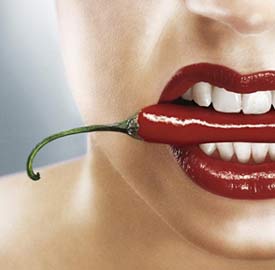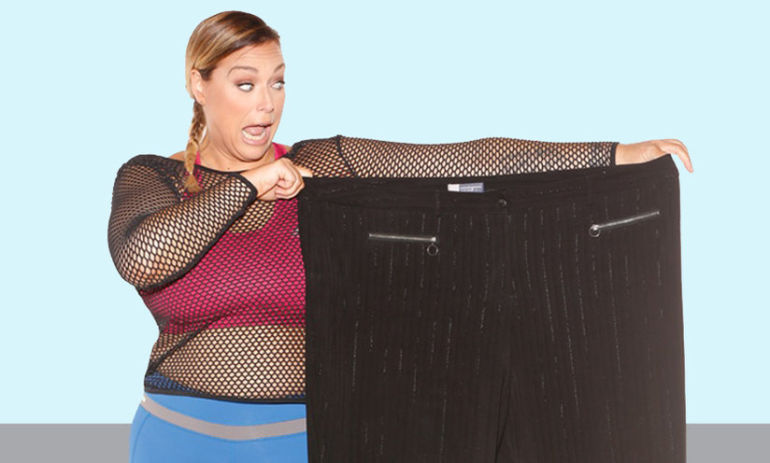Are you eating over losses and disappointments?
Most of us don’t like to spend much time thinking about our losses and disappointments or painful childhood experiences. Yet, without much effort, they are brought to the forefront of our minds when something in our environment triggers thoughts of them. We see a happy couple and think ”Oh, yeah, I had a loving relationship with Jack, until he cheated on me.” We see a pregnant woman and are reminded that our clock ticked out and we missed the chance to have a child. Or we see a chubby child on a playground and remember the shame and criticism we experienced as an overweight child. And then the cell phone rings and our thoughts shift to more pressing matters.
Our bodies and brains are like a computer and have an endless capability to store memories, both pleasant and unpleasant. But unlike computers, there is no “delete” button we can use to trash unwanted memory files. Generally, we resort to defense mechanisms like repression, denial and rationalization to keep our old pain from rearing its ugly head. And while these defense mechanisms protect us by blocking out our old pain, they can also put a damper on our vitality and motivation and lead us to use food for comfort, soothing and distraction.
Without realizing it, those painful experiences you have pushed out of your awareness are fueling your overeating, low motivation, anxiety, depression and relationship difficulties. This may seem odd because you may truly believe your overeating is due to a lack of will power and difficulty coping with current problems or situations. But in truth, your “current pain” is actually the tip of a big iceberg of pain buried deep within, or what I call “old pain.”
There is a better way. While we may not be able to get rid of old painful memories, we can release the emotional pain stored with them, so that when they do surface they no longer carry a strong negative charge. Just like a battery still exists after it has used up its power, these old memories still exist, but now have no power to imbalance us and fuel emotional eating.
The way to release the emotional pain stored with these painful memories is to grieve, regularly, as needed. Simple? Yes. Easy? No. In our fast-paced Western culture, we don’t like to grieve. We steer clear of people who are grieving. Other people’s grief brings up our own unhealed wounds and un-mourned losses. Grieving feels big and overwhelming. Who knows when it will end. We deem it silly and unproductive to cry over something that happened long ago, or even a year ago.
If we expand our perspective and look beyond the immediate discomfort of grieving, we will see that it is represents a process of adaptation and growth; one not to be discounted or avoided. It’s a transformative process; one that leads to renewal, hope and the possibility for creative change.
While there is no quick fix for resolving losses, disappointments and old pain left over from a dysfunctional childhood, the good news is that the more you practice the self-care skill of grieving, the quicker you will be able to discharge old pain and get back to balance. At times, you have to push yourself to exercise and eat healthy food. In the same way you will have to push yourself some of the time to clear out your hurts and old pain.
While grieving is a fairly straight-forward process, do not try the exercises that follow on your own if any of the following apply: you have a history of mental illness, there is mental illness in your family, you feel like you’re falling apart when you experience intense emotions or you have been the victim of severe physical, sexual or emotional abuse or trauma. If any of the above apply, it will be best to access emotions with the help and in the presence of a professional psychotherapist.
Step 1: Prepare a safe space. Create a “womb-like” space at home where you can be alone. You might want to include a stack of pillows, warm blanket, favorite stuffed animal, candle, etc.
Step 2: Prepare yourself. You’ll need to set aside about thirty to sixty minutes of undisturbed time. Take a few moments to focus on your breathing and relax your body from head to toe, consciously releasing any tension in your muscles.
Step 3: Identify a situation causing distess. It would be best to pick something that is bothering you and leading you to want to emotionally eat.
Step 4: Identify the emotions you are experiencing. See if you can really feel your emotions. Where do you feel each emotion in your body? Grief is a mixture of all emotions, not just sadness. You may be experiencing sadness, anger, rage, hurt, guilt, shame, regret, etc. Just allow yourself to feel every emotion.
Step 5: Scan your memory bank as far back as possible for times when you felt this same feeling state. Replay the situations in your mind that led to these same emotions, as best as you can remember them. Once again, allow yourself to deeply feel all the emotions surfacing. Now you are releasing your “old pain.”
Step 6: Write your emotions in your journal. Journal freely, writing in detail about the situation, the painful memories, longings, unmet needs, etc. Don’t skip the writing part. You will find that you stay with your emotions and the grieving process more fully when you journal and your mind isn’t allowed to wander.
Step 7: Close your grieving session with soothing words. Even though the grieving process offers us release and relief, just like a good workout, we can feel spent afterwards. Close out your “session” by writing a few soothing and reassuring phrases in your journal, such as: ”I love you (your name) _______.” “It’s going to be okay.” “We’re going to be okay.” “I’m here for you always.” ” I won’t ever let anything like this happen to you again.”
Step 8: Write down any new awareness or lesson that came out of the grieving. Do you see yourself in a new light? Do you see another person differently? Perhaps you see a situation you went through with new vision.
Grieving losses, disappointments and old pain takes courage, willingness and patience. It demands a leap of faith–that if you go through this dark tunnel, there will be some relief and something better on the other side. I know from both personal and professional experience that grieving is a powerful skill and tool for lessening pain, gaining a sense of renewal and putting an end to emotional eating. When’s the last time you grieved?
-
Losing Weight Is Your Diet A Health Risk To You
Have you noticed that fad diets rise and fall in popularity like the l
-
Choosing a Weight Lifting Program for Women
One of the most effective activities for getting your body into sha
-
Some Useful Things To Avoid In Cutting Down On Weight
There are times on your weight loss journey when progress can come to
-
Emily Browne Learns Percentages
Stranger in the House Emily Browne let out a tiny shriek when she s
-
Quick Weight Loss Program – The Top 5 Weight Loss Lies: The Secret 2 Fat Loss
What if you could learn the single secret to fat loss? When I say a se
-
Decrease Pounds Consuming Raw Nuts
A number of dieters think jam and peanut
- DON'T MISS
- Your Best Weight Loss Tool The Food Journal
- The 15-minute Workout: There's No Place Like Home
- Common Types Of Surgery Used In The Treatment Of Arthritis
- Is Excess Weight In Your Future
- The Connection Between Green Tea And Weight Loss
- Best Way To get rid of Abdominal Weight — Losing Weight in Two Easy Steps
- Lose Weight Really Fast Joining A Gym
- Think Thin And Start Losing Weight Today
- How to Lose 10 Pounds in 3 Weeks
- How to Lose Belly Fat in 4 Steps




